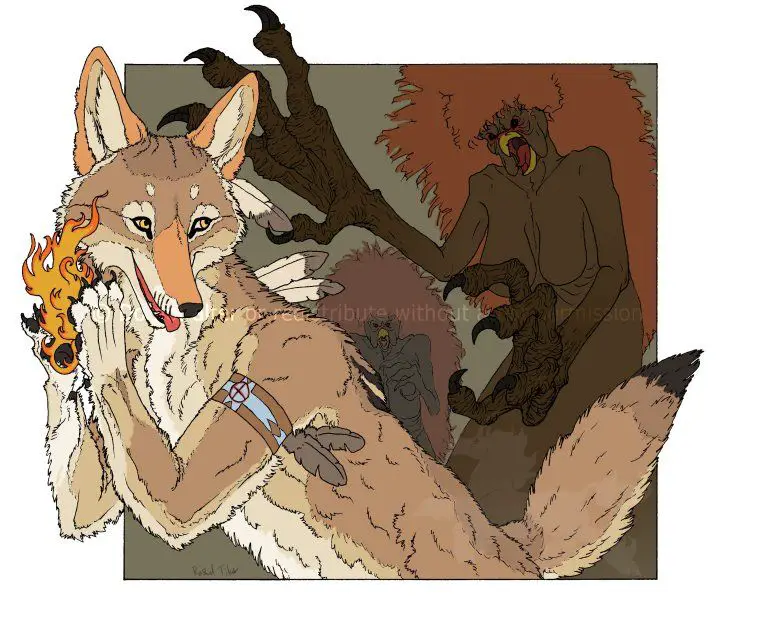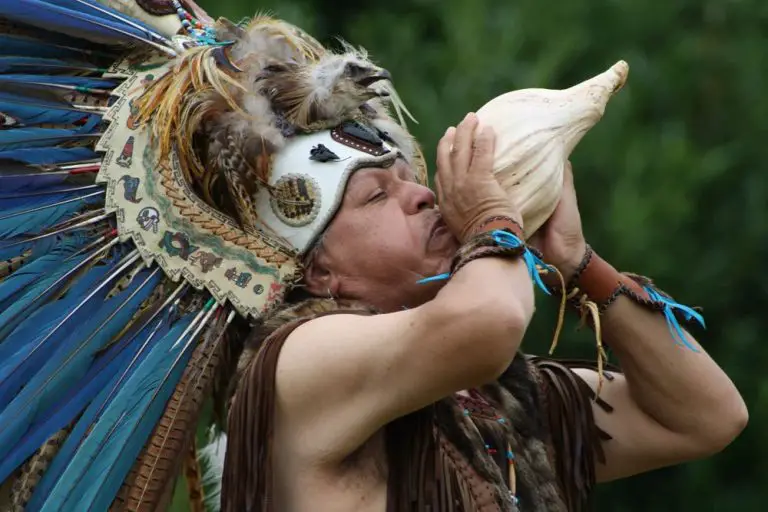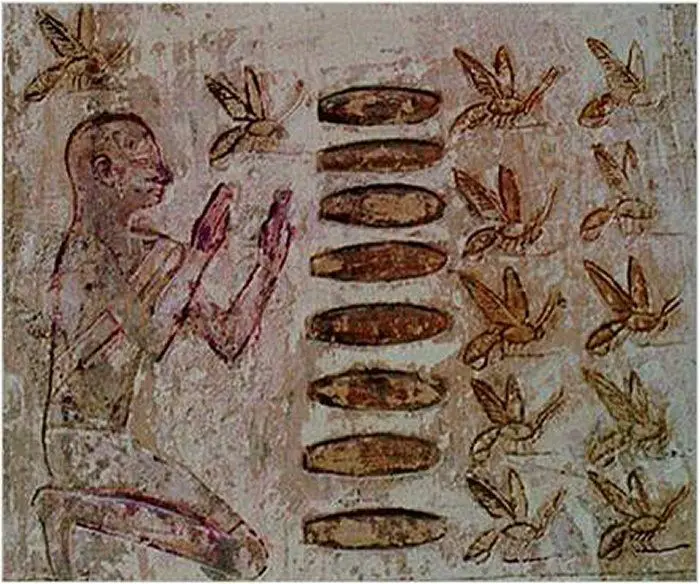What Is The Main Lesson Of Coyote And Fire?
The folk tale of Coyote and Fire comes from the Pacific Northwest region. It is part of the oral storytelling tradition of many Native American tribes, often featuring the trickster character of Coyote. The tale explains how Coyote’s curiosity and trickery accidentally brought fire into the world for humans to use. However, his carelessness with fire also leads to negative consequences that he comes to regret. The story provides lessons about curiosity, caution, and unintended consequences.
Coyote’s Curiosity
Coyote lived in a village near a mountain where the Fire Beings guarded their fire night and day. Coyote was curious about the fire and wondered what it was like. He crept up the mountain one night and watched the Fire Beings carefully tend the flames. Coyote was fascinated by the glowing embers and the warmth that radiated from the fire. He wanted to get closer and touch it.
As Coyote observed, he became more and more curious. The fire seemed almost alive as it danced and flickered before his eyes. Coyote thought to himself “If only I could get some of that fire, I could bring its light and warmth to my people.” Coyote’s curiosity about the captivating fire grew stronger each night that he visited the mountain.
Coyote Steals Fire
Coyote was very curious about the fire that the Skookum people had in their village. He wanted to see it up close and bring some back to his people. One night, Coyote snuck into the village and stole a torch from a Skookum’s house (1). He lit a branch on fire from the torch and quickly ran away, bringing the stolen fire back to his people. Coyote was excited to share this new discovery, not realizing how dangerous and unpredictable it could be.
(1) “Coyote and Fire.” PDF File, p.12. Retrieved from [https://www.shmemorial.org/cms/lib/NJ01912932/Centricity/Domain/58/Coyote%20and%20Fox%20AND%20How%20Bear%20Got%20Stuck%20in%20the%20Sky.pdf](https://www.shmemorial.org/cms/lib/NJ01912932/Centricity/Domain/58/Coyote%20and%20Fox%20AND%20How%20Bear%20Got%20Stuck%20in%20the%20Sky.pdf)
Spreading Fire

Once Coyote had stolen the fire, he wanted to share it with others. As told in the story Coyote and Fire from Tapestry of Faith, “Coyote raced down the mountain, the fire flickering brightly in his hand. He ran to show the people this wonderful new gift.”[1] However, Coyote had trouble containing the powerful flames.
In his enthusiasm to spread the fire, Coyote lost control of it. As described in Coyote Steals Fire, “In his excitement, Coyote spread the fire too quickly at first. He burned his tail and his hind feet.”[2] The fire began to burn out of control. “Coyote had to keep throwing the fire from paw to paw to keep from being burned.”[3] Though his intentions were good, Coyote underestimated the danger of the uncontrolled fire.
Coyote learned that fire is a powerful force that must be treated with great care and respect. Though he was excited to share fire with others, he failed to consider the unintended consequences of spreading it recklessly. Coyote’s singed tail and burnt paws taught him an important lesson about balancing curiosity with wisdom.
Fire Spreads Uncontrollably
After Coyote took the fire from the Creek village and spread it to human camps, the fire began to grow out of control. Fanned by strong winds, the flames spread rapidly through the forests and grasslands. Despite Coyote’s attempts to contain it, the fire roared wildly in all directions, incinerating everything in its path. The intense heat and billowing smoke made it impossible for Coyote to extinguish or rein in the inferno he had unleashed.
As referenced in “The Fire on the Mountain” folk tale from Ethiopia, once fire is brought down from the mountains, it can swiftly grow into a devastating blaze that no one can stop (https://www.coreknowledge.org/wp-content/uploads/2017/03/CKHG_G4_U5_FE_1-The-Fire-on-the-Mountain.pdf). The flames spread for miles, burning down trees, vegetation, and Anything else in their way. Coyote realized in horror that by taking the fire from the Creek village, he had lost control of its immense and dangerous power.
Coyote’s Regret
Once fire had been unleashed on the world, Coyote soon came to regret his actions. The flames spread wildly through the forests and plains, burning everything in sight. What started as a helpful tool for the people quickly became an uncontrollable, destructive force. According to this retelling, Coyote tried to put out the fires but it was no use. The flames burned day and night, and the smoke made it hard to breathe.
Coyote felt deep remorse that his desire to help the people obtain fire had gone terribly wrong. The consequences were far beyond what he imagined or intended. The world was being ravaged by the rapidly spreading flames. As told in a Shoshone tale, Coyote wept and prayed for forgiveness for the damage he had caused. He learned the hard lesson that curiosity and good intentions are not enough – one must act with wisdom and caution when meddling with the natural order of things.
Lesson on Curiosity
The story of Coyote and Fire teaches an important lesson about curiosity and its dangers when left unchecked. As described in the tale, Coyote was intensely curious about the red flower called fire that he saw burning in the distance. His inquisitiveness led him to steal fire for his people, despite warnings about its destructive power. As stated in one analysis, “curiosity is an active mechanism in many fairy tales” (Role of Curiosity in Grimm’s Fairy Tales). Coyote’s unchecked curiosity results in unintended and harmful consequences, as the fire spreads out of control.
The story serves as a cautionary tale about the dangers of curiosity when it is not balanced with wisdom and forethought. Though curiosity can lead to discoveries and advancements, the tale of Coyote underscores that unchecked curiosity and impulsiveness can lead one to tamper with forces beyond their understanding or control. This central lesson about curiosity is common in many folk tales and fairy tales, which often depict curiosity leading to forbidden knowledge or powers that prove dangerous. As such, a key lesson readers can take from the story is the importance of cultivating curiosity with care and caution to avoid causing harm.
Lesson on Caution
One of the key lessons from the story of Coyote and fire is the importance of exercising caution when dealing with powerful forces that are beyond our full understanding or control. As described in the cautionary tale “Coyote Steals Fire” on the site Cautionary Tales, Coyote’s unwise decision to steal fire from the village, driven by his curiosity and desire for the warmth and light, leads to destructive and unintended consequences. Though Coyote did not comprehend the immense power of fire, he impulsively took it without considering how difficult it would be to contain.
The tale serves as a warning about the need for care and deliberation before tampering with formidable elements in nature. Coyote regretted his hasty actions, as the fire raged out of control, but the damage was already done. As cautionary tales like this one demonstrate, failing to exercise proper caution when handling powerful forces can lead to disastrous results. The lesson for listeners is to consider potential risks and exercise judicious restraint, even when motivated by seemingly benevolent purposes like bringing warmth and light. Powerful forces demand humble caution and care.
Lesson on Unintended Consequences
One of the key lessons from the story of Coyote and Fire is to consider the unintended consequences of our impulsive decisions. Coyote’s impulsive action to steal fire from the village resulted in catastrophic unintended consequences as the fire spread uncontrollably. As noted in an analysis, “Due to the tale’s varying literary methods it can change the effectiveness of conveying the intended meaning or lesson” (The Consequences Of Folk Tales). Coyote did not think through the potential dangers of spreading fire before taking the flame. This serves as a cautionary tale to thoughtfully consider the unintended effects our actions may have.
The story warns that our curiosity and impulses can lead us to make rash decisions without contemplating the implications. Just as Coyote came to regret his reckless actions, we may come to regret leaping into something without fully thinking it through. As one author analyzed, unintended consequences often result when we act based on our impulses rather than carefully weighing the outcomes: “Once upon a time there was a good Idea, nay a noble Idea. This Idea was full of the best intentions” (The Unintended Consequence). The lesson is to curb our impulses, think before acting, and carefully consider potential consequences.
Conclusion
In summary, the main lesson of Coyote and Fire is about the unintended consequences of taking or using something without fully understanding it. Coyote was curious about fire and clever enough to steal some from the Skookum family, but he did not consider how difficult it would be to control. Once released, the fire spread wildly beyond Coyote’s intentions. While fire did end up benefiting humanity by keeping them warm and enabling cooking, it came at a steep price that Coyote regretted. The tale is a cautionary one about acting without careful deliberation and foresight. Coyote’s impulsive actions, though well-meaning, led to disastrous results. The story reminds us to approach new powers and technologies with care, considering potential dangers as well as benefits. Overall, it’s a timeless message about understanding the complexity of the natural world and being thoughtful stewards.




